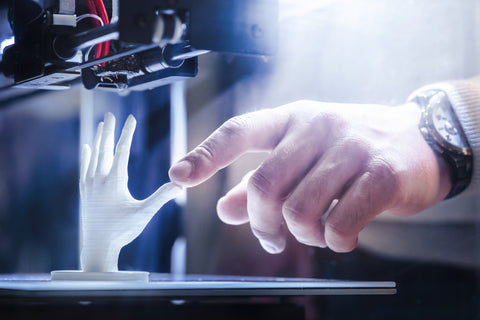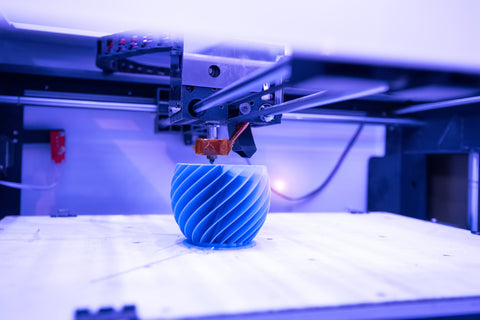What is 3D Printing and How Does it Work?
If you owned a 3D printer, what would you print first? Something quirky perhaps, like a drone or a trinket for your desk? Maybe something bigger like a guitar, a car part or even a house? Here at Technology Outlet, we have a passion for 3D printing, but not everybody knows exactly what 3D printing is about, or how printers are now capable of printing full objects now instead of ink on paper. We decided to explain exactly how this unusual and modern technology works by going back to basics. Read on for more!

What is it?
3D printing is pretty much what it sounds like - the printing of a 3D model. But this form of manufacturing isn’t like your standard factory production because the final object actually originates from a digital design on a computer. 3D printers have transformed the creative process, allowing everything from shoes to houses and even dead people to be printed using a variety of different materials!
Where did it come from?
3D printing evolved from its older cousin - 2D printing. If you run your finger over printed words on a piece of paper, you won’t be able to feel anything. But 2D printing isn’t entirely two-dimensional. If you were to observe the print under a microscope, you’d actually see that the letters sit slightly on top of the surface of the paper, rather than staining it. If you then printed the same page thousands of times over the top of one another, the ink would start to layer up and eventually you would have a solid 3D model of your text. This layering idea is what triggered the initial concept of 3D printing.
How does it work?
But how do all of these weird and wonderful creations come together? 3D printers work by placing thousands of tiny layers on top of one another from the bottom up. Gradually these layers stick together and form a solid object in a process called additive manufacturing. Because each layer is as simple or complex as you’ve programmed it to be, 3D printers can create any kind of shape or model over a period of hours.

Whilst there are different kinds of 3D printers which each work differently, the majority of 3D machines act almost like a large hot glue gun, using solid materials and melting them down to deposit them out in a different shape. It takes a 3D CAD model (Computer-Aided Draughting Software) from a computer and converts the coordinates so that it can print many two-dimensional, cross-sectional layers - flat prints that sit on top of one another. Rather than using ink, the printer deposits filaments like molten plastic or powder to fuse them together with adhesive or even UV light. 3D printers can ‘print’ in over a hundred materials from metal to nylon and even human cells! Thermoplastics are often used as the material melts when heated but solidifies when cooled down. One of these plastics - ABS - is used to make LEGO bricks, car interiors and even the insides of refrigerators, so it should come as no surprise that it’s a popular material in the 3D printing world.
The benefits of 3D printing are huge. Not only is the manufacturing process up to 10 times faster than other methods and 5 times cheaper, prototypes no longer take days to create, but hours. Although high-end printers are still expensive, there are cheaper machines on the market which are becoming more sophisticated by the day. As previously covered in our article "The Future of 3D Printing", this type of manufacturing is all set to revolutionise industries such as medicine, education and even food. The technology is expanding day by day, and now is a great time to see what you can do with it.
Are you interested in trying this new printing process? Check out our range of 3D printers and see how you could start creating right from your own home!






Good Morning,
I have read your article with great interest on 3D Printing.
I an a learning lead with the Department of Business, Energy and Industrial Strategy (BEIS) and I am putting together a learning programme in August on the subject of 3D Printing to all my colleagues across BEIS. I am specifically looking to find a speaker who could give us a background of this emerging technology and a look forward to where it is going.
The event would be held over Microsoft Teams for about 45- 60 minutes maximum. Does you company have the resource to help out with this request?
Leave a comment